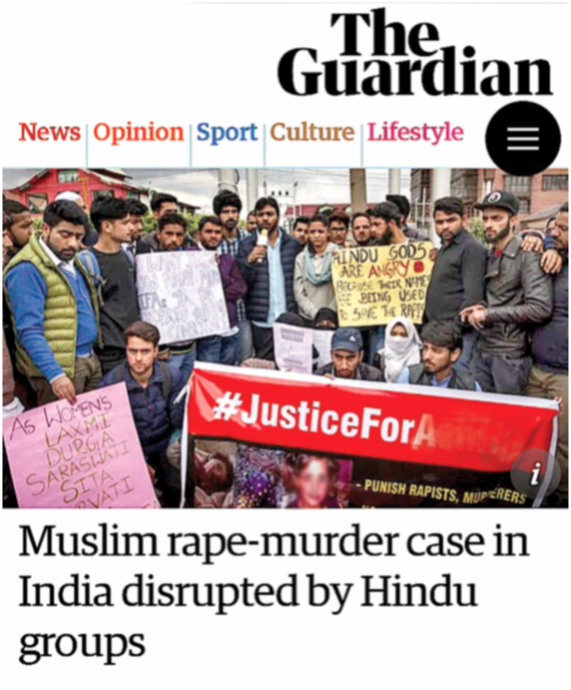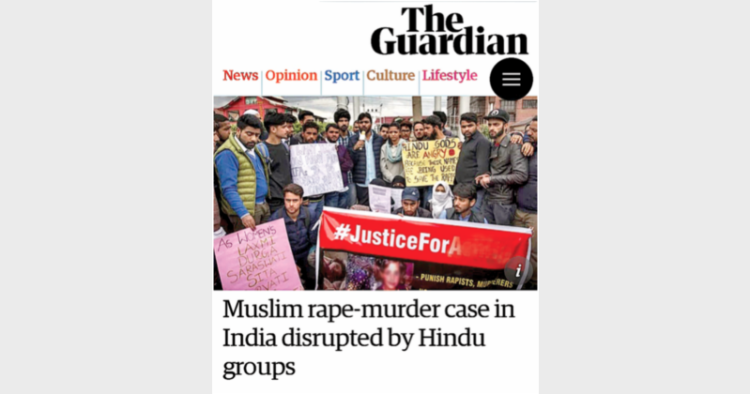The media must refrain from twisting the narrative, deliberately or otherwise, as it could have far-reaching effects on the society
Umesh Upadhyay

Keenly contested elections, which used to be fun to witness earlier, have become tools for sowing seeds of divisiveness and creating an unnecessary rift in the society. Without a doubt, there were fake news and fake narratives earlier as well, but the media largely remained a neutral player. However, now it seems a section of the media wittingly or unwittingly has become an active player in this game. The danger is that this will intensify as we approach the 2019 elections.
Take the example of the heinous Kathua rape case. The crime was so gruesome that words are insufficient to describe it. It shames us as a nation. It shames us as a society. How come a little girl was subjected to such barbarism? But the narrative that was built in the aftermath of the incident seemed motivated, to denigrate the Hindus. How come a handful of people were shown to represent a whole faith?
A cursory look at a few headlines makes it amply clear. Headlines such as “Muslim rape-murder case in India disrupted by Hindu groups”, (The Guardian) clearly indicates this trend. If terror has no religion how come perpetrators of rape and brutal murder are identified with a faith? This narrative has a definite pattern. This was deliberately made into a Hindu-Muslim issue by creating a selective narrative. Let me elaborate this further. Under the Protection of Children from Sexual Offences (POCSO) Act any person who discloses the identity of a child victim could be sent to a minimum six months” imprisonment. Media is forbidden to reveal the identity of the victim. Section 23 of the POSCO act specifically makes it clear that the media can not name the victim.
However, almost all the media organisations ran campaigns which named the victim—such as ‘JusticeforAxxxa”. While it’s the responsibility of the media to fight for justice and make authorities accountable, they should have refrained from naming the victim. I am not sure if it was an oversight or if they willingly became part of the Hindu-Muslim narrative on the issue. Media has had enough experience of covering such cases. Even in the gruesome ‘Nirbhaya’ rape case of Delhi they did not name the victim. So it’s safe to presume that they knew the law and understood the sensitivity involved in crime against girl child cases.
It was only after a suo moto intervention by the Delhi High Court that the media stopped naming the victim. Delhi High Court fined 12 media houses including The Times Of India, The Indian Express, NDTV, The Hindu, Republic TV, Deccan Chronicle, Navbharat Times, The Week, The Pioneer, Firstpost, The Statesman and India TV. The argument forwarded by the lawyers of these well-established media houses was that the mistake was due to ignorance of law and misconception that they could name the victim as she was dead.
Interestingly almost same time another alleged rape incident became a point of national debate. It was the Unnao rape case. Did the media name the victim in this case? It didn’t. So how come they were ignorant of the law only in a particular case.
The court obviously didn’t accept the argument and imposed a fine of Rs 10 Lakh each on these 12 media houses. Strangely, the same narrative continues in the social media platforms such as Facebook and Twitter and people continue to name the girl. People are shamelessly using the name of the poor girl. We should not allow this insensitivity and the blatant non-adherence to the laws of the land. I want to narrate another incident to show how a selective narrative is being built for a larger political motive by using incidents involving crime against women. An upcoming model in the city of Indore, Madhya Pradesh tweeted on April 23 that she was molested by two unidentified persons on a busy street in the city. She wore a skirt and the criminals pulled her skirt. She tweeted a picture of her bruised leg from her twitter account @SharmaAakarshi.
Here is her tweet: “It happened on one of the busiest roads of Indore, and nobody tried to stop them. They ran away, and I couldn”t even see their number. I”ve never felt so helpless. I”m not the kind of girl who will just sit and watch. Those fiends ran away, and I couldn”t do anything.”
Nothing wrong with the tweet! A brave girl indeed as she decided to go public with her ordeal. However, see how this incident is twisted to give it an altogether different colour. Within a few hours of the tweet, Shashi Tharoor tweets : “Read this thread. How the self-appointed custodians of Bharatiya Sanskriti harassed a woman because of what she was wearing. What gives these jerks the right to do so? Officially-sanctioned bigotry & sanctimony from the top. We need to free Indians from such mob morality.”
I wonder where was the need to bring in ‘Bhartiya Sanskriti’ here. Is it because the crime happened in a BJP-ruled State? Such an incident can happen in any State of the country. However, Tharoor goes further and tries to implicate the top leadership of the country to create a false narrative that the top leadership of a party supports hooliganism and crime against women. Linking it with ‘Bhartiya Sanskriti’ is also not very innocent either. If you notice both these crimes are not fake news. However, a deliberate attempt was made to give it a different colour. There are many more examples when even the facts are concocted to sow the seeds of discord, divisiveness, and hatred to create an atmosphere of mistrust.
Earlier last week I happened to be in the august company of a high profile group of senior editors. We were in the middle of a debate on revisiting the code of media ethics that the group had created a few years ago. There were arguments and counter-arguments. However, the dominant group failed to even agree to constitute an internal committee for the purpose of reviewing the code. The reason put forth was that if a committee is formed at this time the government will think that all was not well with the media. This set me thinking. This was like taking a political position on a matter that concerned the very basics of journalism. Should we not worry about the present state of media? Is all well with media? Does an ostrich-like approach augur well for the larger cause of democracy?
Agenda-driven and motivated fake narrative is not only dangerous for our democracy, it is equally, if not more, dangerous to the institution of the media itself. It creates a false imagery that negatively impacts the long-term credibility of the media and other institutions. Media minus credibility is no more than a roadside gossip-adda. Sadly, more and more journalists and media institutions are increasingly being perceived as biased and taking sides. Unverified and unsubstantiated postings on various social media platforms have increased this confusion manifold.
With new modes of communication and all-pervasive technological intervention in our everyday life, we need to look at newer norms and a clear direction. Leaving it to the forces of market is as dangerous as entrusting it in the hands of the governments of the day. The media is the keeper of citizen’s conscience and the larger interests of the society. It can’t allow the fake Narratives to be disseminated as they are. It has the responsibility to keep its balance and cool in these times of created political chaos, one-upmanship and narrow political agendas.
(The writer is a senior journalist and media executive)













Comments